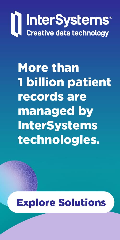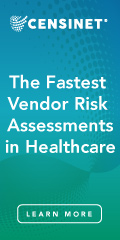CIO Unplugged – 3/15/10
The views and opinions expressed in this blog are mine personally, and are not necessarily representative of Texas Health Resources or its subsidiaries.
Connected Health
By Ed Marx
One of my favorite preteen games was Connect Four, the vertical checkers game. The objective is to be the first to connect four of your checkers in a row. I often played it with my children when they were young, and inevitably one of them would bump the catcher base prematurely and send all the checkers rolling onto the table and floor. But, oh, the fun we had playing.
I’m now playing a new kind of Connect Four. I am not sure who first coined the term connected health, but I like it. Where my organization has labeled our mobility strategy “mHealth,” we call our connected health strategy “cHealth.”
“But,” you ask. “Is this really a strategy worth my promoting efforts?” What about the whiners and traditionalist? What about the departments that insist on doing things their way?
This is a do or die reality. In Going Mobile, I argued that we must drive mobile computing into our strategies or risk getting lost in backwoods roads and putting our organizations at a serious competitive disadvantage. A twin sister to mobility is connected health.
In his sentinel book “The Innovators Prescription,” Christensen advocates dropping the private-public debate. He says we need to disrupt the way in which healthcare is delivered today. He points out that the way to cut costs is to put care and insurance in the same bed. Emerging models include Accountable Care Organizations (ACO) and the medical home. Each of these requires the four traditional silos—hospitals, physicians, payors, and patients—to break down barriers and act as one entity for the sake of patient centered care.
Essentially, to Connect Four.
Today, healthcare suffers under a fragmented care network. Embedding connected health into our hospital’s strategic thinking and summarily executing that strategy will set future success in motion. And yes, we’ll have to brave those who try to tip the catcher base and disconnect all our checkers. But may we never be the cause of IT atrophy!
Health Information Exchange (HIE), while critical, is not the same thing as “cHealth.” Think of HIE as 1.0, and then bump “cHealth” to 2.0 status. HIE shares some common traits and can create the infrastructure, but “cHealth” disruptively advances the transformation of our healthcare ecosystem. The leader who settles for a business-as-usual attitude is probably stuck in HIE.
Let me give some “cHealth” examples. These are purposefully high level so not to divulge strategies specific to my employer.
Patient Portals
Personal Health Records
Mobile Connectedness
TeleHealth
- Between Physicians
- Between Hospitals
- Between Hospitals/Physicians
- Between Hospitals/Patients
- Between Physicians/Patients
Wellness Programs
Secure Messaging
Home Care
Remote Monitoring
Wireless Monitoring
Education
HIE
Payors
We all understand the fragmentation of healthcare processes and costs in existence today. “cHealth” provides alignment. By executing “cHealth,” we’ll have the connectedness necessary to actualize ACOs and Medical Homes—providing the highest quality of care at the lowest price point—Ultimate value.
Connect Four. Who would’ve guessed that we could learn so much from a kid’s game? Except now the stakes are much higher.
Ed Marx is senior vice president and CIO at Texas Health Resources in Dallas-Fort Worth, TX. Ed encourages your interaction through this blog. (Use the “add a comment” function at the bottom of each post.) You can also connect with him directly through his profile pages on social networking sites LinkedIn and Facebook, and you can follow him via Twitter – User Name “marxists.”



















































































Cant you sue the F&B company for fraud if they said they paid you money but never did?